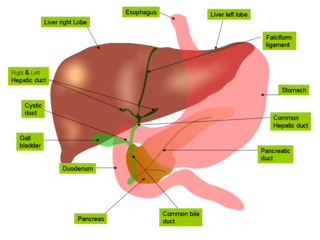Should I do a Coffee Enema?
Many of my clients ask me about the use of various detoxification methods including coffee enemas. Below, I provide the research, rationale and approach to using a coffee enema for physical and emotional wellbeing. As in all therapies, one should undertake detoxification protocols in collaboration with the guidance of a health professional who can assess the benefits or detractions in a particular case.
Indigenous peoples have long used enemas for health or religious purposes, often using animal skins, bladders, or horns to hold the liquid or liquefied plant substances. Substances inserted into the rectum travel into the large intestine where they are absorbed via the intestinal wall into the bloodstream.
Enemas are a direct route for absorbing different substances. Drs. Marshall and Thompson discussed the use of colonic irrigation for “mental conditions” in the New England Journal of Medicine (1932). There are many types of enemas that people may use, however, one of the most effective enemas is the coffee enema.
Coffee enemas aid liver and gallbladder function
The coffee enema is used primarily for liver/gallbladder detoxification, even though the route is through the intestine. Coffee enemas are a powerful method of detoxification and provide “dialysis of the blood across the gut wall” (Walker, 2001, p. 49).

Coffee enemas support liver function; they dilute bile, dilate blood vessels, reduce inflammation of the intestines, and enhance gluthianone S transferase, thus facilitating the phase 2 liver detoxification pathway. While sometimes ridiculed by the uninformed, coffee enemas were until recently included in the bible of medicine, the Merck Manual of Diagnosis and Therapy (Gonzalez & Issacs, 1999).
Enemas promote a sense of relaxation
Coffee enemas promote a sense of relaxation, reduce pain significantly, and promote wellbeing by stimulating parasympathetic response (N. Gonzalez, personal communication, June 23, 2002). In my clinical practice, I recommend them to almost all my clients. However, some individuals who have been sexually abused, or had abusive toilet training practices as children, or who have been conditioned to believe touching their anus should be avoided, or who have negative associations with fecal elimination, may be resistant to this form of detoxification and need not be pressured but can be reassured. In these cases, following discussion and technical instruction, it must remain a personal decision for each individual about whether to proceed with this method of detoxification. Not everyone will choose to do it and this should be perfectly acceptable.
Instructions
Prepare a comfortable place in your bathroom. This might include a thick rug covered with a towel and a pillow for resting your head. (Once you are able to control the retention of the fluid, you may “fill up” in the bathroom and make a place on your bed, covered with a towel, where you may rest during the enema). Once the process is smooth, people tell me they listen to a podcast, or chat on the phone with friends or watch a video, get some reading done or rest and meditate during the enema.
Prepare a quart (one liter) of coffee, using two tablespoons of organic coffee grounds per quart of nonchlorinated water. The water should be purified and not used from the tap unless it is first filtered. Decaffeinated coffee will not work for enemas. Decaf does not contain the cafestol required to affect the liver cleansing. The coffee should be made in a stainless steel or glass coffee maker. Aluminum is not recommended since aluminum is a toxic metal and can leach into the coffee while perking. Do not use paper filters as they remove cafestol. “Cowboy coffee” is an easy way to make your enema preparation. You can add one teaspoon of unsulfured blackstrap molasses to each quart of coffee, while the coffee is hot; the molasses aids in retaining the enemas though some do not need to add molasses. For efficiency, make a quart of this coffee mixture in advance and keep it in the fridge. Keep an electric pot in the bathroom to heat up water as needed. Make sure you judge the ratios correctly to maintain the correct strength. The coffee is best used at body temperature. If it cools too much overnight, add some hot water before using.
When preparing to take the enema, lie on your left side, and lubricate the tube and the anus using a lubricant like K-Y jelly. Insert the colon tube (28 French colon tube) slowly 12 to 18 (and never more than 18) inches into the rectum. If there is some leaking from the tube, this usually comes from where the hard plastic tube attaches to the colon tube. At the end of the hard plastic tube of the enema bag there are usually two holes, one on the end and one on the side. Clip off the end so there is only one hole at the end of the tube. This is usually where the leaking comes from. Release the stopper, and let about a pint of coffee slowly flow in, then re-clamp. If the coffee won’t flow, this usually means there is a kink in the tube, and you must withdraw the colon tube and reinsert. Sometimes it is advisable to take in a little fluid and release immediately in the toilet to flush out collected waste in the rectum. This then allows for easier retention. At first, it may be difficult to retain the enema. If this is the case begin with half a cup and increase the amount as you get used to the process. Retain the coffee for ten minutes before expelling. Do not hold the enemas for longer than fifteen minutes. Repeat the enema, holding for another ten minutes. Do two doses, each consisting of one pint held for ten minutes, in the morning. If you do this in the afternoon do not do this after 3 pm.
If after the first few sessions you feel jittery or have trouble falling asleep, you are making the coffee too strong. For best effects do the coffee enema daily. Make it part of your overall self-care routine.
Caution
Remember, as with all therapies, one should undertake detoxification protocols in collaboration with the guidance of a health professional who can assess the benefits or detractions for your particular case.
References
Gonzalez, N. J., & Issacs, L. (1999). Evaluation of pancreatic proteolytic enzyme treatment of adenocarcinoma of the pancreas, with nutrition and detoxification support. Nutrition and Cancer, 33 (2), 117–124.
Marshall, H. K., & Thompson, C. E. (1932). Colon irrigation in the treatment of mental disease. New England Journal of Medicine, 207 , 454–457.
Walker, M. (2001). Liver detoxification with coffee enemas as employed in the Gerson therapy. Townsend Letter for Doctors and Patients, 216 , 46–50.




